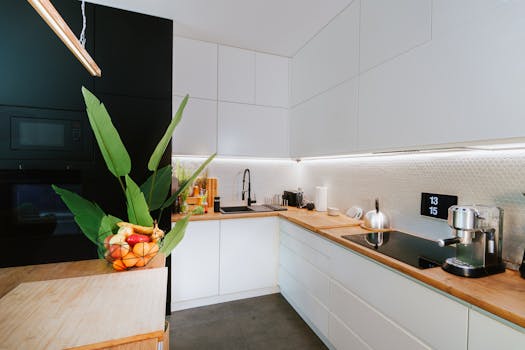
Table of Contents

Smart Home Devices

In recent years, smart home devices have revolutionized the way we live. From smart thermostats to automated lighting systems, these technologies provide convenience, security, and energy efficiency. One of the most popular smart home devices is the smart speaker, which can control other connected devices through voice commands. Imagine walking into your home and saying, “Turn on the lights” or “Set the thermostat to 72 degrees.” This level of automation not only enhances your lifestyle but also saves energy and reduces utility bills.
Moreover, security systems equipped with smart technology allow homeowners to monitor their properties remotely. Cameras, doorbell monitors, and motion sensors can all be accessed through your smartphone, giving you peace of mind no matter where you are. Many of these devices also integrate with home security services, allowing for immediate alerts in case of suspicious activity.
Smart home technology is also paving the way for home automation. Systems like Google Home or Amazon Alexa can connect with various devices in your home, allowing for seamless control. You can set routines, such as having your coffee maker start brewing as soon as your alarm goes off. The convenience of having these systems at your fingertips makes daily life more manageable and enjoyable.
Wearable Technology

Wearable technology is another area where innovation is making significant strides. Smartwatches and fitness trackers are becoming increasingly popular, providing users with health metrics at a glance. These devices can monitor heart rate, track steps, and even analyze sleep patterns. By having this data readily available, users can make informed decisions about their health and lifestyle.
For fitness enthusiasts, wearable tech offers an array of features, such as GPS tracking for runners or cycling enthusiasts, workout coaching, and integration with fitness apps. This kind of technology encourages a more active lifestyle, as it gamifies the experience of exercising. Many wearables also support notifications, allowing users to stay connected without constantly checking their smartphones.
Moreover, the health tech sector has seen advancements in wearables that monitor specific health conditions. Devices designed to track glucose levels for diabetics or wearable ECG monitors for heart health are becoming invaluable tools for patients. These technologies not only empower individuals to take control of their health but also facilitate better communication with healthcare providers.
Health and Fitness Innovations

The integration of technology in health and fitness is not limited to wearables. Virtual reality (VR) and augmented reality (AR) are making waves in the fitness industry, offering immersive workout experiences. VR fitness games allow users to engage in workouts that feel more like play than exercise, making it easier to stick to a routine.
Telehealth services have also become more prevalent, allowing patients to consult with physicians remotely. This advancement ensures that healthcare is accessible, especially for those in rural or underserved areas. Online platforms enable individuals to schedule appointments, receive diagnoses, and even participate in therapy sessions, all from the comfort of their homes.
Nutrition technology is another exciting development. Apps that analyze dietary habits and suggest meal plans tailored to individual health goals are gaining popularity. With access to food databases and AI-driven recommendations, users can make healthier choices more easily, which can lead to improved overall wellness.
Sustainable Living Tech

As awareness of environmental issues grows, technology that promotes sustainable living is gaining traction. Smart appliances, such as energy-efficient refrigerators and washing machines, not only reduce carbon footprints but also save money on utility bills. Solar panels have also become more accessible, allowing homeowners to generate their own energy and reduce dependence on fossil fuels.
Moreover, technologies that support urban gardening and vertical farming are emerging, allowing individuals to grow their own food in limited spaces. These innovations promote self-sufficiency and reduce the carbon footprint associated with transporting food. Apps that help users track their food waste and suggest recipes based on leftovers further contribute to sustainable living.
In addition, the rise of electric vehicles (EVs) is transforming transportation. With advancements in battery technology and charging infrastructure, EVs are becoming a practical alternative to traditional gasoline-powered cars. Adopting electric vehicles not only benefits the environment but also offers long-term savings on fuel and maintenance costs.




